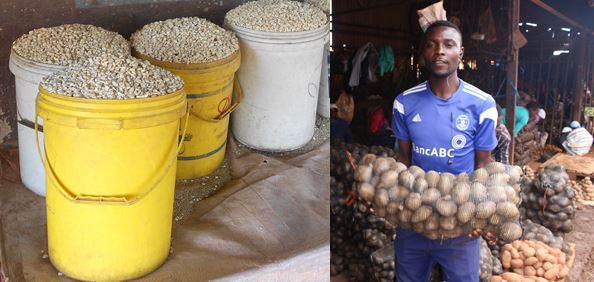|
Getting your Trinity Audio player ready...
|
By Charles Dhewa
Prices of agricultural commodities in various markets are some of the most under-rated insights in African agriculture. Policy makers are more concerned with the prices of processed products like bread, cooking oil, sugar, margarine, maize meal, and imported products like fuel. There is no interest in tracking prices of daily basics like leafy vegetables, tomatoes, onion, potatoes, and many other commodities on which the majority of urban and rural low-income households depend.
Without prices, the ministry of agriculture or ministry of finance will not be able to know if the agriculture sector is making a profit or loss. Where some countries celebrate a bumper harvest, gluts in disorganized markets often suppress prices, translating to low income and more poverty for smallholder farmers. A farming community that sells 100 000 tons of maize in the mass markets at USD3/bucket collectively earns USD3 million but if the costs of inputs like fertilizer are added to this figure to make it USD5 million, it means the community has incurred a loss of USD2 million from maize production. Rather than ending with celebrating bumper harvest, returns at the farmer level should be a key consideration.
Market prices have broad and deep implications
Market prices have major implications for all actors such as farmers, transporters, traders, processors, consumers, and policymakers. That is why tracking prices should start from production zones all the way to diverse markets, showing prices and trends for different commodities in different markets. The ministry of agriculture and relevant departments like extension services and marketing authorities should know the value of commodities traded as well as prices in mass markets that distribute more than 70% of the surplus commodities. Ignoring the mass markets is ignoring information about three-quarters of food distribution.
Many farmers who earn low prices from a particular commodity are likely not to grow that commodity next season and this can be a reversal of the bumper harvest. That is why policymakers should be interested in balancing the affordability of commodities with profit for farmers. While consumers are happy about low prices, what about the farmer? There is a need for mechanisms that support pricing systems in mass markets. As long as production and supply remain uncoordinated, price volatility will continue making it difficult for value chain actors to plan. Prices will change frequently because markets will not be informed about what is coming from where, when, by whom, and in what quantities. The absence of institutions interested in what is happening in mass markets implies that the valuation of agriculture commodities in mass markets is always missing.
The power of strong linkages and fluid records
In many African countries, a major weakness is the absence of linkages between government departments such as the ministry of agriculture and the ministry of local government. Consequently, there is no proper pathway for sharing knowledge and information as well as handing over roles and responsibilities embedded in commodities that move from production zones to mass markets which are often under the jurisdiction of local authorities.
Very simple commodity sales and stock tracking tools can be introduced in agricultural supply chains. When tracking starts at the farmer level, it enables the farmer to track commodities before and after harvesting, showing how much is used for household consumption and the surplus remaining for the market. Data should show volumes consumed at household or community levels, what is used for stock feed, surplus for the market, and how much is given to relatives or used as modes of payment for labor.
While farmers are capacitated to keep records of fertilizer, rainfall, and others, there are often no records of how they use their harvests. Any farmer can sell what s/he wants without consulting local extension officers who assisted in production. If farmers keep records on sales, policymakers should be able to assess the extent to which farming is becoming a profitable business. Sales records can also show how different markets are saving the interest of farmers and the extent to which different markets are contributing to agricultural and rural development. If the records show that smallholder farmers get 70% of their income from informal mass markets, policymakers will be compelled to improve infrastructure and other facilities in mass markets that are patronized by the majority.






